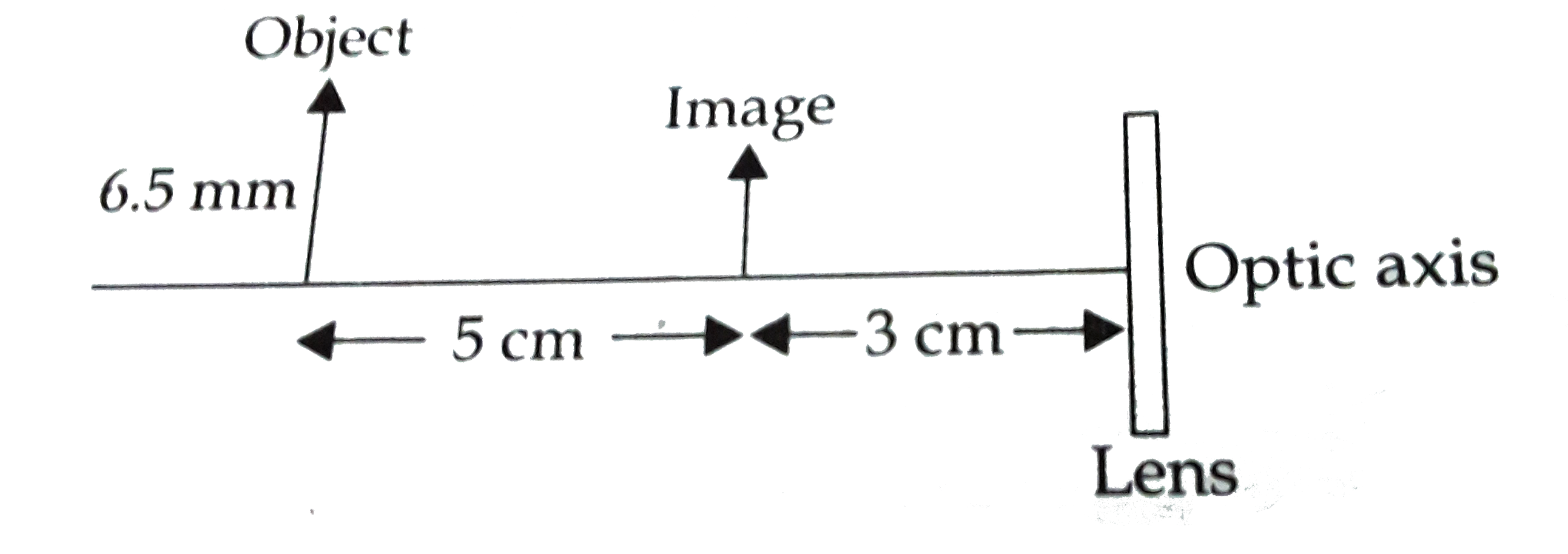A lens forms a virtual, diminished image of an object placed at 2m from it. The size of image is half of the object. Which one of the following statements is correct regarding the nature and focal length of the lens?
Concave, |f|=1m
Convex, |f|=1m
Concave, |f|=2m
Convex, |f|=2m
The correct Answer is:c.
To solve the problem step by step, we will analyze the information given and apply the lens formula and magnification concepts.
Step 1: Understand the Given Information
We have a lens that forms a virtual, diminished image of an object placed at a distance of 2 m from the lens. The size of the image is half that of the object.
Step 2: Assign Values
- The object distance (u) is given as -2 m (the negative sign indicates that the object is placed on the same side as the incoming light).
- The magnification (m) is given as the ratio of the height of the image (h') to the height of the object (h). Since the image is half the size of the object, we have:
m=h′h=12
Step 3: Relate Magnification to Image Distance
The magnification can also be expressed in terms of image distance (v) and object distance (u):
m=−vu
Substituting the values we have:
12=−v−2
This simplifies to:
12=v2
Cross-multiplying gives:
v=1 m
Step 4: Use the Lens Formula
The lens formula relates the object distance (u), image distance (v), and focal length (f):
1f=1v−1u
Substituting the values of v and u:
1f=11−1−2
This simplifies to:
1f=1+12=32
Thus,
f=23 m≈0.67 m
Step 5: Determine the Nature of the Lens
Since the focal length (f) is positive, this indicates that the lens is a convex lens.
Conclusion
The correct statement regarding the nature and focal length of the lens is that it is a convex lens with a focal length of approximately 0.67 m.
---
We have a lens that forms a virtual, diminished image of an object placed at a distance of 2 m from the lens. The size of the image is half that of the object.
- The object distance (u) is given as -2 m (the negative sign indicates that the object is placed on the same side as the incoming light).
- The magnification (m) is given as the ratio of the height of the image (h') to the height of the object (h). Since the image is half the size of the object, we have:
m=h′h=12
The magnification can also be expressed in terms of image distance (v) and object distance (u):
m=−vu
Substituting the values we have:
12=−v−2
This simplifies to:
12=v2
Cross-multiplying gives:
v=1 m
The lens formula relates the object distance (u), image distance (v), and focal length (f):
1f=1v−1u
Substituting the values of v and u:
1f=11−1−2
This simplifies to:
1f=1+12=32
Thus,
f=23 m≈0.67 m
Since the focal length (f) is positive, this indicates that the lens is a convex lens.
The correct statement regarding the nature and focal length of the lens is that it is a convex lens with a focal length of approximately 0.67 m.
Topper's Solved these Questions
- BOOK - CENGAGE PHYSICS ENGLISHCHAPTER - GEOMETRICAL OPTICSEXERCISE - Assertion-Reasoninig2videos
GEOMETRICAL OPTICS
- BOOK - CENGAGE PHYSICS ENGLISHCHAPTER - GEOMETRICAL OPTICSEXERCISE - Linked Comprehension51videos
GEOMETRICAL OPTICS
- BOOK - CENGAGE PHYSICS ENGLISHCHAPTER - GEOMETRICAL OPTICSEXERCISE - Subjective26videos
GEOMETRICAL OPTICS
- BOOK - CENGAGE PHYSICS ENGLISHCHAPTER - ELECTRON,PHONTS,PHOTOELECTRIC EFFECT & X-RAYSEXERCISE - dpp 3.315videos
ELECTRON,PHONTS,PHOTOELECTRIC EFFECT & X-RAYS
- BOOK - CENGAGE PHYSICS ENGLISHCHAPTER - HEATING EFFECT OF CURRENTEXERCISE - Thermal Power in Resistance Connected in Circuit27videos
HEATING EFFECT OF CURRENT
Similar Questions
A mirror which always forms virtual, diminished and erect image of an object is
View SolutionA mirror which always forms a virtual, diminished and erect image of an object is :
View SolutionA thin convex lens from a real Image of a certain object 'p' times it size .The size of real image become 'q' times that of object when the lens is moved nearer to the object by a distance 'a' find focal length of the lens?
View SolutionA lens forms an erect, magnified and virtual image of an object.
Name the lens.View SolutionA lens forms an upright and diminished image of an object when the object is placed at the focal point of the given lens.
Name the lens.View SolutionShown an object and its image formed by a thin lens. Then the nature and focal length of lens is
 View Solution
View SolutionA convex lens forms an image of an object on a screen 30 cm from the lens. When the lens is moved 90 cm towards the object, then the image is again formed on the screen. Then, the focal length of the lens is
View SolutionA lens produces a virtual image between the object and the lens.
Name the lens.View SolutionA lens forms an upright and diminished image of an object when the object is placed at the focal point of the given lens.
Draw a ray diagram to show the image formation.View SolutionA convex lens has a focal length of 20 cm. It is used to form an image of an object placed 15 cm from lens. The image is
View Solution

